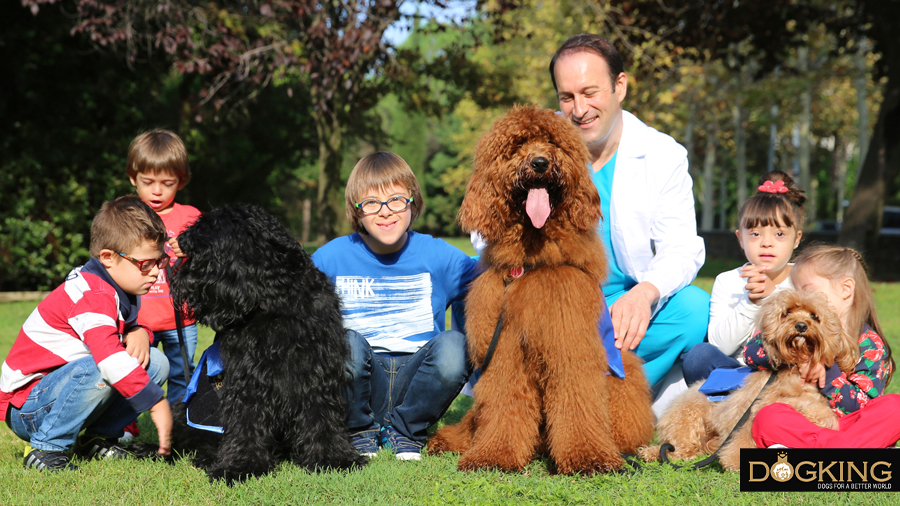Different ways your dog says "I love you"
Unconditional love may also be expressed without words

CANINE SIGNS OF AFFECTION
Reading time about 7 minutes
Anyone who enjoys the company of a dog knows firsthand that its love is unconditional, sometimes even more than that of any human being. However, how does it show us, what attitudes or actions encourage this affection, and how does it vary among dog breeds?
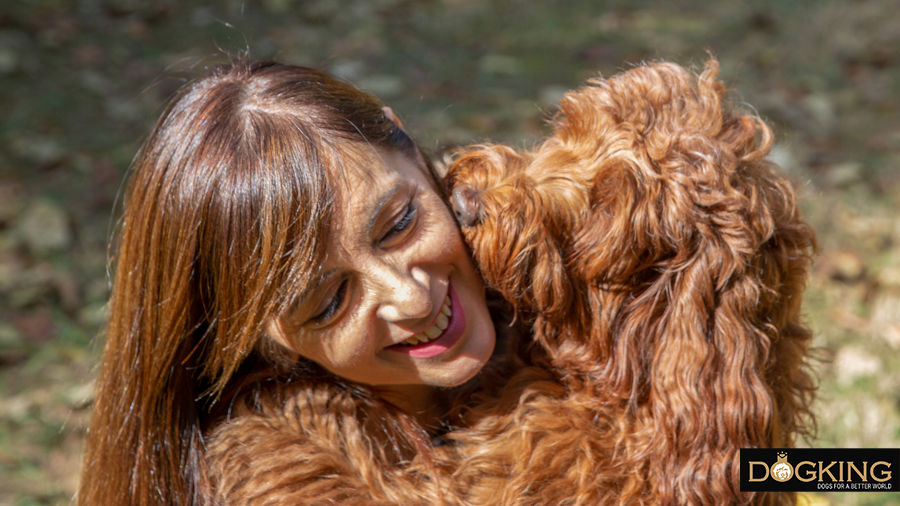
Table of contents
1- The most common ways in which our dog shows it loves us
2- The influence of dog breed on showing affection
The most common ways in which our dog shows it loves us
Some of the following behaviours or gestures are probably familiar to our pets, and we may have questioned their true meaning more than once. Although it is true that animals can’t communicate verbally in the same way as humans, they are even able to say "I love you" through their body language or habits. The following would be the most common signs that are examples of this.
1. It wags its tail and gets excited to see you
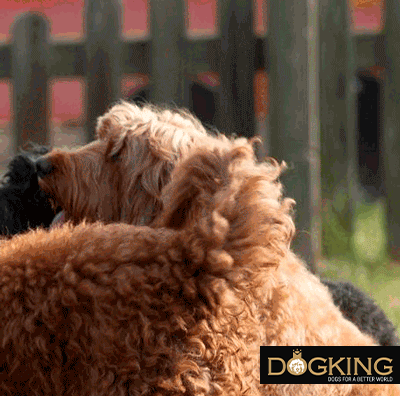 There's nothing like arriving home and being greeted by your dog with great excitement at seeing you. Although there may be several reasons why a dog wags its tail, the most problable reason is that it is happy to see you. What’s more, they also express their happiness by smiling, even though it may seem strange. As dogs have lived with humans since ancient times, they have learned to imitate us even in our facial expressions. Knowing their moods is actually more obvious than we think. However, we should know how to differentiate between happiness and lack of control, as our reaction could encourage possible separation anxiety and cause our dog to have a bad time in our absence.
There's nothing like arriving home and being greeted by your dog with great excitement at seeing you. Although there may be several reasons why a dog wags its tail, the most problable reason is that it is happy to see you. What’s more, they also express their happiness by smiling, even though it may seem strange. As dogs have lived with humans since ancient times, they have learned to imitate us even in our facial expressions. Knowing their moods is actually more obvious than we think. However, we should know how to differentiate between happiness and lack of control, as our reaction could encourage possible separation anxiety and cause our dog to have a bad time in our absence.
How to react: It is very important, especially as a puppy, to wait to greet your dog when it has calmed down. If we pet our dog when its energy levels are still very high, we will be confirming the lack of control it feels at the sight of us, encouraging it to repeat crazy behaviour and increasing separation anxiety. Once your dog has calmed down, pet it, especially on areas such as the belly or behind the ears. You should smile back at your dog and say kind words in a pleasant or playful tone of voice. This will help your dog to see that your enthusiasm for seeing each other is mutual and in a calm and non-anxious way.
2. It keeps eye contact with you
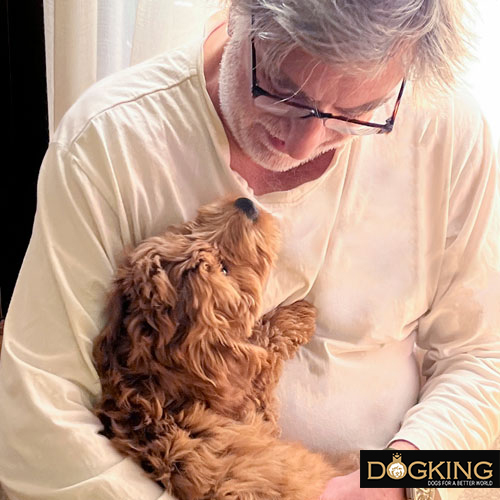 Although it may seem awkward, for most dogs, when staring at a human while playing with or being petted is a gesture of intimate affection and a sign of trust. In fact, studies show that, when dogs look at you, their brains secrete oxytocin, the same hormone that is secreted when mothers look at their babies and form a first bond. However, it is important to differentiate between a loving way of looking from a challenging or threatening one, in this last situation we shouldn't keep eye contact for a prolonged period of time.
Although it may seem awkward, for most dogs, when staring at a human while playing with or being petted is a gesture of intimate affection and a sign of trust. In fact, studies show that, when dogs look at you, their brains secrete oxytocin, the same hormone that is secreted when mothers look at their babies and form a first bond. However, it is important to differentiate between a loving way of looking from a challenging or threatening one, in this last situation we shouldn't keep eye contact for a prolonged period of time.
How to react: Strengthen your bond by returning a sweet or complicit look, especially during its routines such as walks, when you pet it, or while you play together.
3. It gives you its favourite toy
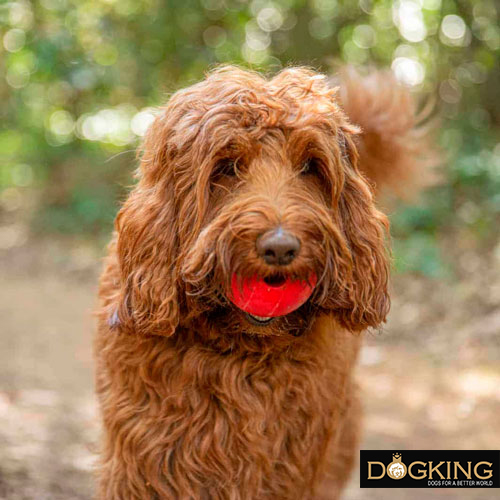 If your dog not only gives you its time to be with you, but also its most precious toy, this means that it trusts you completely and wants to make you happy by giving you a gift. In fact, several studies show that dogs don’t leave their toys to just anyone, so if it comes to you willing to play, you are definitely part of its circle of trust.
If your dog not only gives you its time to be with you, but also its most precious toy, this means that it trusts you completely and wants to make you happy by giving you a gift. In fact, several studies show that dogs don’t leave their toys to just anyone, so if it comes to you willing to play, you are definitely part of its circle of trust.
How to react: You should pet it gratefully and throw it the toy so that your dog may fetch it to strengthen your bond. If you want to gain its trust and make it see you as a playmate, be the one to take the first step. Throw your dog a toy and invite it to bring it to you with an energetic and motivating attitude.
4. It lets you pet it, or even hug it
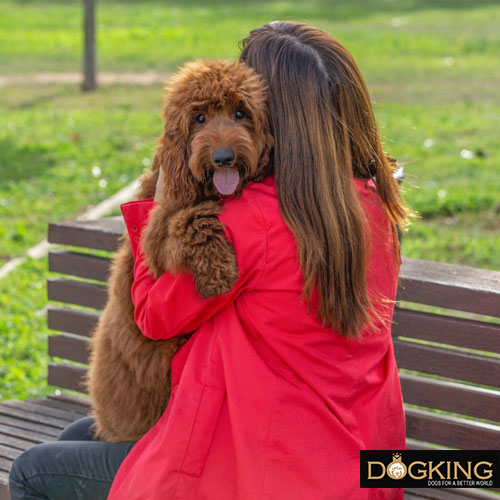 When a dog allows you or even seeks you out to be petted, it is a sign that it trusts you and appreciates you. What's more, the fact that dogs show you more vulnerable areas such as their belly is a guarantee that they know you won't do them any harm. As for cuddling, although for us it is a clear sign of affection, for them it isn't so much, so on many occasions they will let you cuddle them simply because they love you.
When a dog allows you or even seeks you out to be petted, it is a sign that it trusts you and appreciates you. What's more, the fact that dogs show you more vulnerable areas such as their belly is a guarantee that they know you won't do them any harm. As for cuddling, although for us it is a clear sign of affection, for them it isn't so much, so on many occasions they will let you cuddle them simply because they love you.
5. It licks you
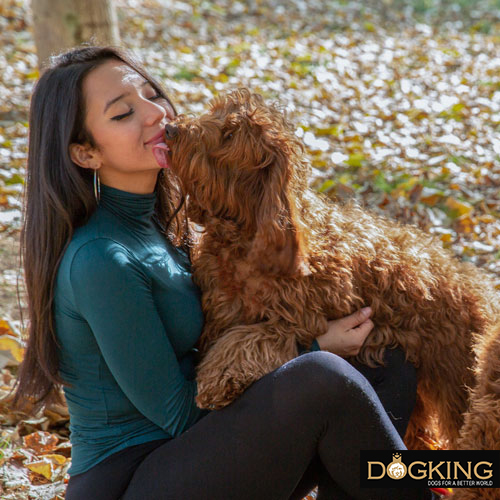 If you have ever thought that your dog's licks are a way of "kissing” you, you aren’t far wrong. In fact, licking you is the most common and well-known way dogs show their love.
If you have ever thought that your dog's licks are a way of "kissing” you, you aren’t far wrong. In fact, licking you is the most common and well-known way dogs show their love.
6. It follows you everywhere
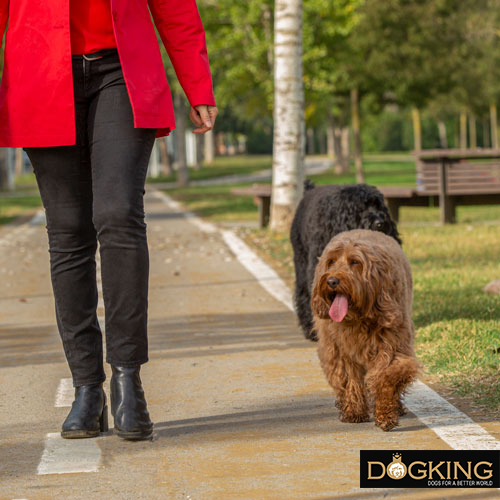 If you have ever felt that your dog follows you wherever you go, the first thing that probably comes to your mind is that it wants to play or eat. However, many times it is simply telling you that it doesn’t want to be separated from you at any time, as it appreciates your company and wants to show you its loyalty. What's more, such is the capacity for empathy that these animals have, that they may read your emotions and stay by your side when you aren’t feeling well.
If you have ever felt that your dog follows you wherever you go, the first thing that probably comes to your mind is that it wants to play or eat. However, many times it is simply telling you that it doesn’t want to be separated from you at any time, as it appreciates your company and wants to show you its loyalty. What's more, such is the capacity for empathy that these animals have, that they may read your emotions and stay by your side when you aren’t feeling well.
How to react: If you are unconfortable with it following you or feel a certain dependence, avoid getting angry or scolding it. With a lot of patience, teach it to sit where you want to do it, give it the signal with your voice, and reward it if it succeeds with caresses or treats that your dog likes very much. And remember, perseverance is the key in any learning process.
7. It sleeps close to you
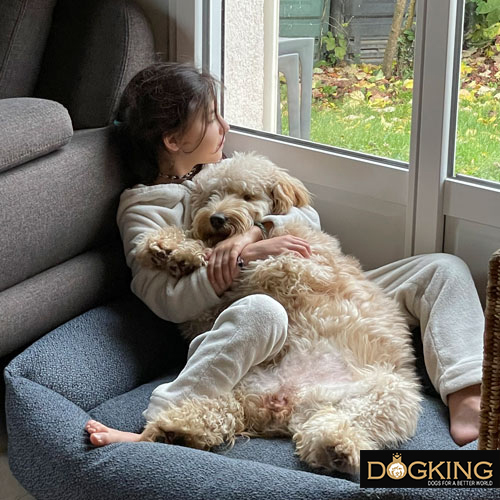 Dogs tend to sleep together in a pack, so it shouldn’t surprise us that they want to sleep near us sometimes even in our own bed, although unless it is for a special need we don’t recommend it for different reasons:
Dogs tend to sleep together in a pack, so it shouldn’t surprise us that they want to sleep near us sometimes even in our own bed, although unless it is for a special need we don’t recommend it for different reasons:
Due to space: It may be uncomfortable as it reduces movement.
Due to hygiene: You will have to bathe it frequently and you don’t forget to clean its paws before bedtime and if you have a shedding breed, your bed will be full of hairs, which will also increase the hygiene of your bed.
Due to temperament: You should be careful that it doesn’t generate hyper-attachment or resource guarding.
How to react: If you decide that you won’t share a bed with your furry friend, point out with gestures and words to show your pet the place where it should sleep. Repeat this process several times and use some positive reinforcement until it finally understands where its resting place is. You may also put its bed in your own room so that it feels accompanied.
8. It leans on you
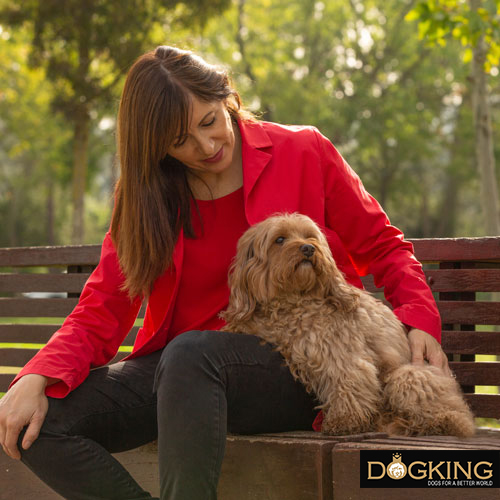
How to react: If you feel uncomfortable having it on top of you, you can carefully move away and pet it so that our dog understands that this is the correct separation to adopt. If we pet our dog when it is resting on top of us, it will understand that its behaviour is accepted and will repeat it. On the other hand, it is important to detect if the protective behaviour becomes exaggerated to the point of not allowing us to interact with those around us, whether they are other animals or humans.
Dogs may sense whether you love them or if they are just one of your pack, so returning these gestures of affection is the key to make them feel part of the family. Beyond buying them a new harness, brushing them, or taking them for a walk, the love you give them will be what they value most in the end.
The influence of dog breed on showing affection
Despite sharing similar habits and gestures as the previous ones, not all dogs communicate with us in the same way, with genetic differences between breeds being an influential factor. In fact, it is the ancestry that largely determines the behavioural traits of our dog and, therefore, the way in which it transmits its love to us. 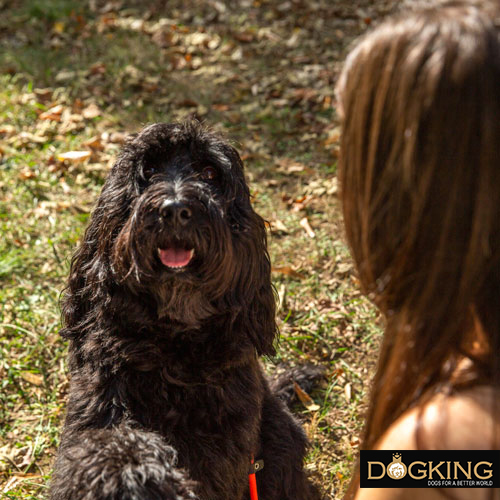 In the case of the Australian Cobberdog, popular for its sociable and sweet temperament, it is very common for it to feel and make you feel affection from its closeness, integrating itself immediately as a member of the family. This implies that, if dogs already show us their love on a daily basis, the Australian Cobberdog achieves that the attachment we perceive is characterized by great empathy, gratitude, enthusiasm and kindness. It is common, therefore, to appreciate a greater sensitivity on the part of this breed in terms of its ability to detect emotions and be more careful in its signs of affection, always showing its attachment with delicacy and self-control. It is for this reason that, if you are sad or in a lower mood than normal, the Australian Cobberdog will try to cheer you up by giving you kisses and being by your side to prevent you from feeling lonely.
In the case of the Australian Cobberdog, popular for its sociable and sweet temperament, it is very common for it to feel and make you feel affection from its closeness, integrating itself immediately as a member of the family. This implies that, if dogs already show us their love on a daily basis, the Australian Cobberdog achieves that the attachment we perceive is characterized by great empathy, gratitude, enthusiasm and kindness. It is common, therefore, to appreciate a greater sensitivity on the part of this breed in terms of its ability to detect emotions and be more careful in its signs of affection, always showing its attachment with delicacy and self-control. It is for this reason that, if you are sad or in a lower mood than normal, the Australian Cobberdog will try to cheer you up by giving you kisses and being by your side to prevent you from feeling lonely.
